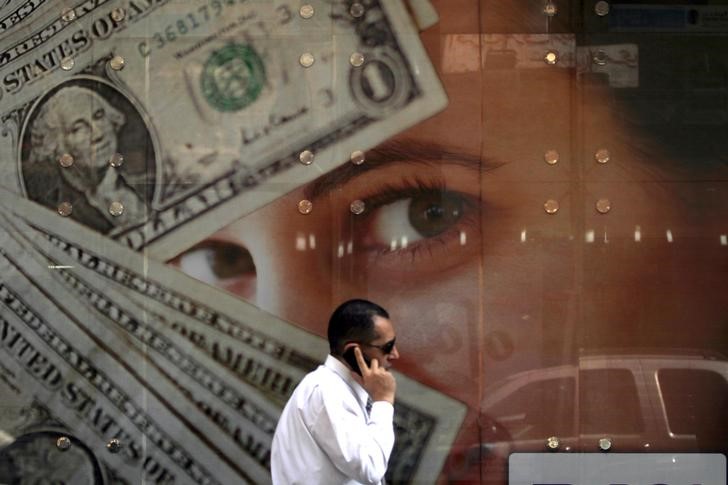* Dollar gains after Shanghai shares rise on China policy easing
* Euro, yen still seen benefiting from risk aversion longer term (Updates moves by the dollar)
By Shinichi Saoshiro
TOKYO, Aug 26 (Reuters) - The dollar edged up against the euro and yen on Wednesday, as China's policy easing steps halted a slide in the region's equity markets and prevented a further worsening in risk sentiment for now.
The U.S. currency was up 0.8 percent at 119.77 yen JPY= , albeit off the high of 120.40 scaled overnight. It managed to pull away from a seven-month low of 116.15, after China's central bank cut interest rates for the second time in two months late on Tuesday.
The greenback traded above 125 yen less than two weeks ago, before widespread risk aversion prompted investors to buy back the yen and euro - currencies used to fund investments into riskier assets.
The euro slipped 0.3 percent to $1.1477 EUR= , extending overnight losses that pushed it away from a seven-month peak of $1.1715.
Following a shaky start, the Shanghai Composite Index .SSEC was up 3.6 percent after the People's Bank of China (PBOC) cut the one-year benchmark bank lending rate by 25 basis points to 4.6 percent, and reduced reserve requirements (RRR) by 50 basis points to 18 percent for most big banks.
The steps, which many had expected the PBOC to roll out last weekend, came after an accelerated free fall in Chinese shares triggered a worldwide domino effect on equities and commodities.
Some analysts anticipate Beijing implementing further measures, and the prospect gave the dollar some support.
"Dollar moves are being dictated by equities. But there is some caution towards aggressively buying currencies like the yen amid hopes that China will come up with additional stock-supporting and easing measures, though this is not yet consensus," said Kyosuke Suzuki, director of forex at Societe Generale (PARIS:SOGN) in Tokyo.
"Dollar/yen and euro/yen trades are attracting much attention from both speculators and real money investors. But given the wide price swings, it appears few are willing to trade cash and choose options instead," he said.
With the longer-term sustainability of China's latest equity supporting steps still in doubt, the euro and yen were expected to continue garnering fresh support should the tumult in risk assets resume.
"We have seen the yen, and particularly euro, gain on flight from risk which results in unwinding of carry trades. The euro has developed a reverse correlation with equities, particularly after the rout in China. Given its ample liquidity, it will likely continue to gain in times of 'risk off,'" said Junichi Ishikawa, market analyst at IG Securities in Tokyo.
The Australian dollar, used as a liquid China proxy, was up 0.1 percent at $0.7137 but still uncomfortably close to a 6-1/2-year low of $0.7044 struck on Monday.
The Chinese currency nudged up, with spot yuan changing hands at 6.4078 to the dollar from Tuesday's close of 6.4124. Despite the modest gains analysts saw the yuan continuing to weaken in the longer run.
"It is not the first time for China to roll out jumbo easing, however it is the first time for China to ease aggressively when the consensus view is shifting towards RMB (renminbi) depreciation," strategists at OCBC Bank wrote.
"Therefore, we see a good chance that RMB may weaken further in both onshore and offshore markets as a knee jerk reaction to China's jumbo easing."
(Editing by Simon Cameron-Moore and Jacqueline Wong)
